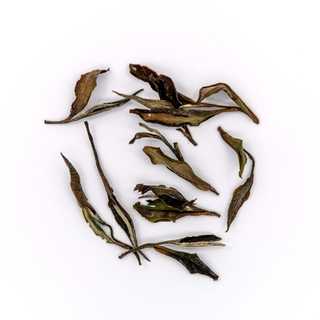Tea
White Tea
White tea is generally believed to have originated and prevailed about 200 years ago in the Ming and Qing Dynasties of China. However, "white tea" this term was mentioned much earlier in a famous publication dubbed Tea Bible in the Tang Dynasty. This mildly oxidized tea tastes sweet and refreshing and is mainly produced in Fuding, Songxi, Zhenghe, and Jianyang in Fujian Province of China. According to tea leaves picking standard, white tea can be classified as Shoumei, White Peony, Baihao Yinzhen, or Gongmei. For examples, Baihao Yinzhen should be picked on a sunny day while one-bud-one leaf and one-bud-two leaves approaches will be applied to picking high-grade White Peony.
The finished white tea appears silvery and snowy and is covered with white tiny hairs, which are hairs on the buds of tea leaves. Given white tea's simpler production process compared with that of the other five major teas, it retains the most natural and authentic flavour of tea leaves. After brewing, this tea looks between light yellowish green and amber. Having a sweet scent but non-greasy serves as a differentiator for white tea. Younger white tea only tastes mildly sweet after the first sip but gives a highly sweet aftertaste. Aged white tea appears mellower with bursts of honey and floral scent.
 Gift / Special
Gift / Special Greenish
Greenish Green
Green White
White Yellow
Yellow Red
Red Dark
Dark Pu'er
Pu'er Floral
Floral

